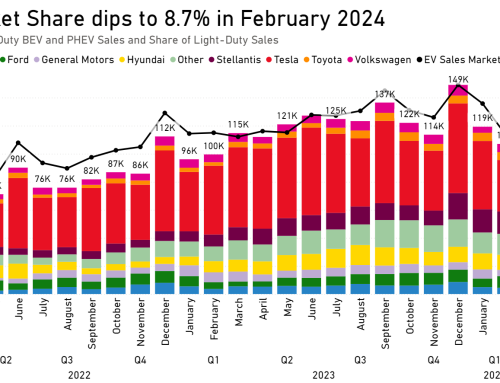
Source: Wikicommons
Since 2017, we have focused much of our energy on pulling together data and insights on transportation, the largest sector for greenhouse gas emissions in the US economy. Now, with that experience in hand and a growing movement to “Electrify Everything”, we are building out our Hub portfolio. Welcome to the stage: Buildings Hub.
Buildings Hub, like EV Hub, pulls together data on key indicators in building electrification and decarbonization. Buildings make up 13 percent of emissions in the United States, constituting a crucial next piece of the Electrify Everything puzzle.
While vehicles and buildings both fall under the decarbonization umbrella, there are some distinct challenges when it comes to electrifying them. Here’s one: buildings take a long time to build and then last a long time. The decisions that we make today on new builds are potentially fixed for decades.
But to start from the beginning — what does building electrification involve? There are three key drivers of fossil fuel emissions in buildings: heating/cooling, hot water and cooking. The key is to convert these end uses from gas-powered appliances to efficient electric alternatives like heat pump HVAC systems and heat pump water heaters. Heat pumps combined with an increasingly cleaner electric grid can deliver significant emissions reductions and bill savings. A report by RMI found that this holds true even in cities with cold winters and fossil-powered grids like Columbus, Ohio and Minneapolis, Minnesota.
Buildings Hub breaks down the data into three main buckets:
1. Public Policy: A summary of developments from states and regions that are leading the building electrification transition, with a focus on Colorado, Washington, California, New York and Massachusetts. This data repository includes policy analysis, proposed legislation and public funding.
2. Buildings Characteristics: A summary of buildings across the country and their energy sources. Using filters, you can navigate through building types, regions, energy sources, time of construction, and so on.
3. Market Factors: A deep dive on data related to emissions and the environment, fuel prices and distribution infrastructure, and other factors driving the market. Curious how many new natural gas pipelines have started construction in 2021? Or which sector uses the most natural gas in each state? It’s all there.
So, what can we learn from the data on Buildings Hub at a glance?
First, over half of all buildings were built before 1970. For residential buildings, 29 million are all-electric out of 118 million housing units. For commercial buildings, 1.9 million out of 5.5 million are fully electric. I don’t need to do the math to tell you that commercial buildings are much more likely to run on electricity than residential buildings.
The Hub also has useful policy insights. Did you know there is a bill under consideration in New York right now that would require all new buildings to be all electric starting in 2024?
Lastly, Buildings Hub will keep you in the loop with key developments. For instance, it has summaries of the building decarbonization elements in the two big bills under consideration in Congress.
You can sign up for Buildings Hub here. If you want a walk through first, we have a launch and a Tour on November 17. You can RSVP here.


